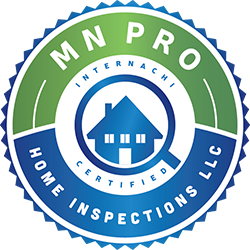According to the Consumer Product Safety Commission, about 22,500 chimney fires occur annually. In a worst-case scenario, chimney fires threaten lives and destroy property. Prevent chimney fires by using the following guidelines.
Know the Signs of a Chimney Fire
There are two kinds of chimney fires: fast-burning and slow-burning. A fast-burning chimney fire is characterized by cracks, pops, and a roaring sound coming from the flue. There will be thick, dense smoke coming into the fireplace and flames coming from the chimney. In case of this type of fire, call 911 and vacate the house immediately.
A slow-burning chimney fire will emit fluffy, gray ash. You may see damaged fireplace tiles and cracks in the chimney’s masonry. This type of fire is not as easily noticeable. The possibility of a slow-burning chimney fire is a good reason to get annual chimney inspections.
Prevent Chimney Fires by Minimizing Creosote Buildup
It may be tempting to have a roaring fire on a cold night, but you can decrease the risk of chimney fires by building a smaller fire instead. Small fires produce less smoke and soot, which reduces the amount of creosote that builds up. Large fires burn more slowly and produce more creosote.
Only Burn Seasoned Wood
Prevent chimney fires by using dry, seasoned firewood. Seasoned logs have cracks at the ends and produce a hollow sound when struck together. Green or unseasoned wood creates more smoke, which condenses inside the chimney and adds to creosote buildup.
Prevent Chimney Fires With an Annual Chimney Inspection
Creosote and soot buildup increase the chance of chimney fires. Schedule your annual chimney inspection before you have the first fire of the season. The inspector will determine if you need a chimney cleaning to help prevent chimney fires.
Don’t Use Paper and Combustible Liquids in the Fireplace
You can prevent chimney fires by refraining from starting a fire with combustible materials or liquids. This includes paper and garbage. These materials can float into the chimney and ignite creosote deposits. Never use gasoline to start a fire in the fireplace. Fires started from gasoline can quickly get out of hand.
Use a Chimney Liner to Prevent Chimney Fires
Protect the structure of your chimney by installing a chimney liner. Chimney liners allow better airflow and reduce exhaust fumes. A liner makes it easier to keep the chimney clean and reduces the chances of a fire.
Install a Chimney Cap
When birds or other animals nest in your chimney, it increases the chances of a chimney fire. Fallen twigs and leaves are a fire hazard, too. Chimney caps are available in aluminum, stainless steel, galvanized steel, and copper and will help keep animals and debris out of your chimney.
Promote Good Air Supply
Restricting the air supply to a burning fire in the fireplace promotes creosote buildup. When burning a fire, fully open the damper.
MN Pro Home Inspections conducts chimney inspections and other home inspection services. Contact us to schedule your annual chimney inspection in the Twin Cities and Western Wisconsin.

